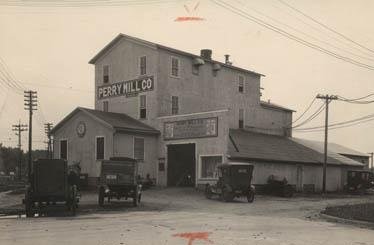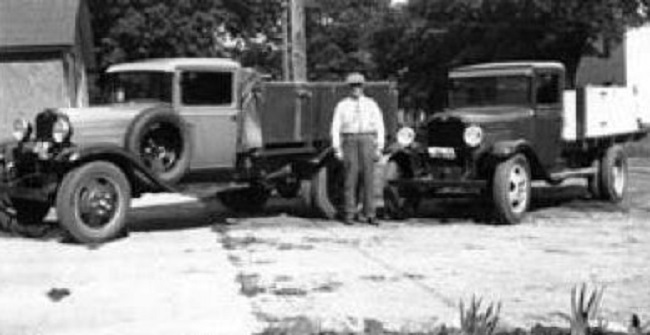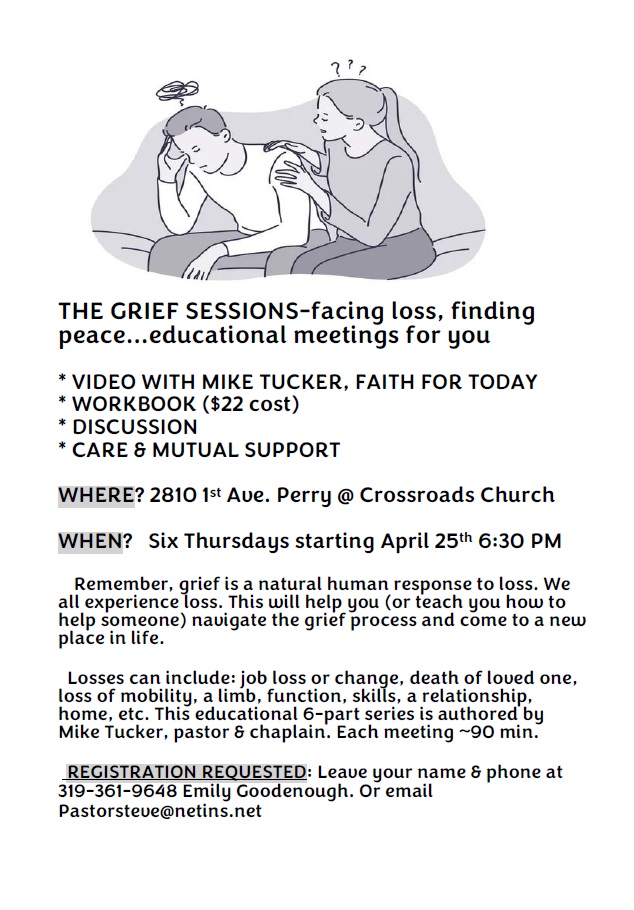
Perry’s first grist mill was built by William Otis and the Selby brothers in 1875 at a cost of $12,000.
Now some say that Otis had been a pirate on the high seas before coming to Perry. At first the mill had three sets of stones, but in the fall of 1879 it was fitted with a roller system, at that time a new method of flour making.
The boiler of the mill was first used on a rebel gunboat on the lower Mississippi River after the fall of Vicksburg. In the contemporary papers are stories about the whistle that was on the old boiler. It was was taken off because it was too loud. It had an 8-inch bell, but at 150 pounds pressure it would break windows and could be heard 15 miles away.
In 1882 the partners sold out to the Kenworthy Brothers, and in 1885 A. J. Capen became a partner. In 1894 the Kenworthys sold out to J. A. Harvey and the mill became known as Capen and Harvey’s.
B. E. Cutter saw a spark of fire from the lightning rod about four o’clock on a Saturday, just as a flash of lightning shot across the sky, and on May 17, 1896, the mill along with two rail cars full of oats were destroyed by fire.
J. O. Holdefer came to Perry in 1914 and put up a mill on the old site. He started with table cereals and flour. Soon poultry and stock feeds were made and sold. In 1955 the mill was sold to George and Jack Whiton. The mill burned down for the last time May 29, 2014.
In 1891 John Shively opened a sawmill at Fourth and South streets. Besides sawing wood, Shively started making picket fencing, commonly used back then. He changed over to the Perry Box and Wire and Picket Combination Fence Co and purchased 300,000 feet of soft-wood logs and 30 acres of timber on the Des Moines River.
All was going well until 1893, when the plant was destroyed by fire and never rebuilt.
Al Cornwall started a junk yard south of the Minneapolis & St. Louis depot, and at that time there was a short unimproved street that he named after himself so he could get his mail.
Later Cornwall sold out to Harry Robinson, who in a short time had a large business. During 1937 they shipped out 33 rail cars of old iron. By 1942 the business had become such a
menace to that part of town that the city ordered them to move.
Robinson got some land south of the Milwaukee shops, and soon it became the “graveyard” of hundreds of cars that once just covered Perry. On June 1, 1949, after Robinson’s death, it was sold to a Mr. Lazarus out of Des Moines and later to a Louis Wangensheim.
At one time, Will Petty had a ice house on south Third Street where the old Moore Hatchery was. Ice was cut on the river and hauled to town and packed in sawdust. They cut enough to last the city for a year.
One winter they cut it from Fahey’s pond just southeast of town. That would be close to
where the Prairie Flower School was at one time. This was about 1901. The place burned down and was sold to Jack Paul, who rebuilt and started to make artificial ice in about 1911.
Paul later began selling all his output to Reynolds Brothers Ice Co., who delivered all over town. The Reynolds eventually got their ice from Des Moines and sold it from a station on the Interurban Railway.
Back in the day, there was Shotwell and Davis, dealers in poultry, butter and eggs. Their place was on W. Second Street, but they also had what people called the “duck pond.” This was south of town and just east of the tracks. It was a man-made pond and had a well with a windmill to pump water. Here their live ducks and geese were kept. In the winter the kids used it for ice skating.
F. M. Fazel in 1918 started gardening south of town on the old Shotwell and Davis acreage. He raised all kinds of vegetables and one year he grew and sold a half-million strawberry plant wholesale. He also raised so much horseradish that he got a rail car of bottles for his business.
In time he got in sweet corn and then hybrid field corn. In 1935 old man Fazel retired and his four sons started Fazel Brothers Co. for the production of hybrid seed corn. After the canning plant closed, the Fazels moved in and used it as their place of business.
In 1945 the Fazel brothers brought in 150 Jamaicans to detassel corn. They were housed in the rooms of the old canning plant.
Some of the first brick buildings in Perry used bricks from Perry Brick and Tile. The plant was west of town and north of the Milwaukee tracks. Mr. Zartman was the plant superintendent. The operation closed some time around 1905.



















